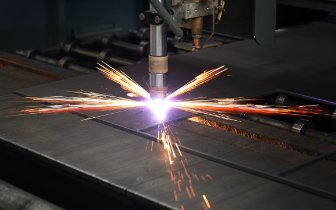A jig is designed to guide a cutting tool and is normally used when manual operations like drilling or reaming are required. A fixture is a heavy-duty manufacturing aid used to secure and align raw materials in a CNC machine for example.
This article will describe the difference between jigs and fixture assembly aids as well as how jigs and fixtures work, where they are used, specific design considerations, and their various advantages.
What Are Jigs in Manufacturing?
Jigs are devices that guide and support the cutting or shaping tool in a manufacturing operation. For example, a jig can be used to guide a drill bit or reamer to precisely drill a hole. Jigs can be custom-made for specific operations, or they can be used for general-purpose applications across multiple operations and multiple parts. In many cases, jigs are an essential part of the manufacturing process, as they help to ensure that products are made to precise and repeatable specifications. It must be noted that due to the precision of CNC machines jigs are not required on these machines. A drilling jig is shown in Figure 1 below:

What Are the Differences Between a Jig and a Fixture?
Fixtures and jigs are manufacturing aids used to help hold and position parts for subsequent operations. Jigs, however, are used to guide the cutting tool to help achieve precise results without the need for expensive, high-precision tools like CNC machines. Jigs are often lightweight, so they can be easily handled by technicians for maximum productivity. Fixtures on the other hand are used to hold and support raw materials and parts during manufacturing operations like CNC machining as well as in fabrication to align elements prior to welding.
What Are Jigs Used for in Manufacturing Processes?
Jigs are used to guide a cutting tool and are most often used for drilling, reaming, and tapping operations. The jig helps keep the raw material fixed in place so that it does not move or deflect during drilling, thereby allowing for precision holes without the need for expensive CNC machines.






